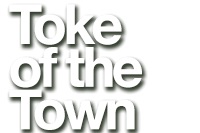| Photo: The Weed Street Journal |
| Interestingly, the 1911 Massachusetts law specifically permitted medicinal use of cannabis with a prescription |
Friday marks an unhappy anniversary in hemp history. On April 29, 1911, Massachusetts enacted the first state law making it illegal to sell or possess cannabis without a prescription, becoming the first U.S. state to institute marijuana prohibition.
Violators of the new law were subject to a $100 fine and up to six months in jail, and just being present in the same room with marijuana could get you three months, according to cannabis historian Dale Gieringer of California NORML.
Ironically, marijuana was merely collateral damage of the Massachusetts law, which was aimed primarily at other “hypnotic” drugs such as opium, morphine and heroin. Abuse of opiate painkillers had become a concern among reformers and temperance advocates in the early 20th century, and cannabis was added to the list “for the sake of completeness,” since it was also a hypnotic palliative commonly found in pharmacies.
“This incidental decision would turn out to have far-reaching consequences, aptly illustrating the dangers of governmental misjudgment in matters of drug regulation,” Gieringer said.
Interestingly, the Massachusetts law specifically permitted medicinal use of cannabis with a prescription; the medical value of “Indian hemp” was widely acknowledged at the time.
“Only in 1937 was medical cannabis suppressed at the insistence of federal narcotics boss Harry Anslinger, whose last-century ‘Reefer Madness’ policy sadly remains with us today,” Gieringer said.
| Photo: Natl NORML/flickr |
| Dale Gieringer, CA NORML: “Ironically, only after being prohibited did cannabis become widely popular” |
It didn’t take long for other states to hop onto the moralistic anti-drug bandwagon. California, Maine, Indiana and Wyoming all prohibited marijuana in 1913, despite the fact that, just as in Massachusetts, there was no public concern about cannabis at the time.
Officials admitted that marijuana was not a problem, but warned that “it might become one” unless “steps were taken” to prevent it.
“Ironically, only after being prohibited did cannabis become widely popular,” Gieringer said. Marijuana use spread in the 1920s from Mexican and Caribbean immigrants to jazz musicians and hipsters; so, predictably, did the laws against it, since its use was popularly associated with minorities, fringe elements, and strange-seeming subcultures.
More than 30 states had outlawed marijuana by 1937, when Congress passed the first federal prohibition law, and penalties got stiffer and stiffer through the 1950s and into the 1960s.
“None of this did anything to prevent an explosion in marijuana use in the late 1960s and 1970s,” Gieringer said. “The result was to leave marijuana firmly established as America’s second most popular intoxicant after alcohol, a status it seems destined to enjoy for the foreseeable future.” (Actually, in my opinion, it’s fixin’ to leave alcohol in the dust.)
“In practice, prohibition has served as a crime-creation program, criminalizing otherwise innocent Americans, promoting a criminal market, and generating disrespect for the law,” Gieringer said. “Americans would be well advised to reject their bankrupt paternalism and reclaim their historical freedom to use cannabis.”

